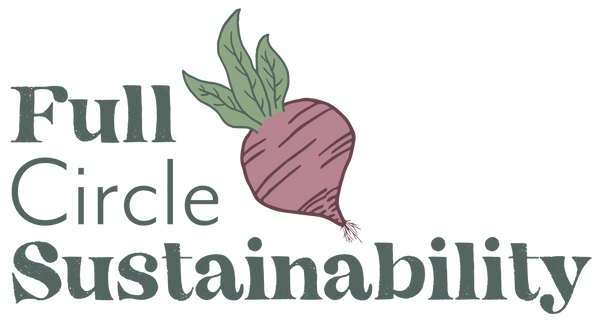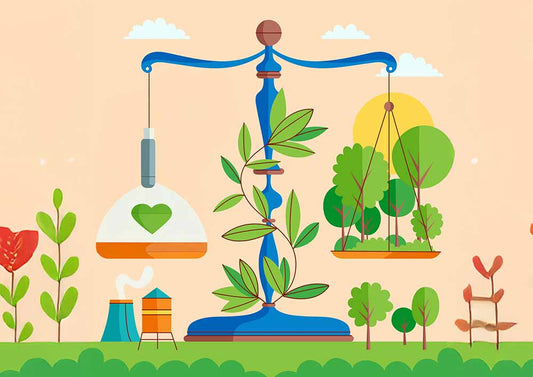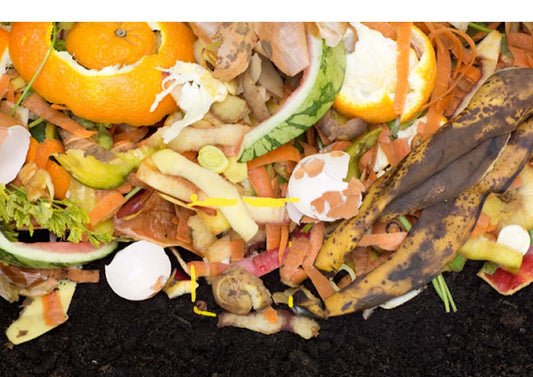
An Eight-Leaf-Clover Day at Stone & Sparrow Farm
Dauna and Dustin Hess of Stone & Sparrow Farm and Mill didn't start growing crops because they wanted to farm. Their initial goal was to restore the soil. Dauna has a background in biology, and Dustin...let's just say he can nerd out on soil health with the best of them! When we met them at their farm two weeks ago, he started diving deep on microbes and pH levels...and then apologized for going into so much detail. But that level of enthusiasim and knowledge about agriculture is exactly what we want to hear from our farmers! He knows what he's doing—which is part of what makes Stone & Sparrow special. Conventional farming can solve problems "easily" with pesticides and herbicides. Dauna and Dustin have opted to take on a challenge: figuring out how to "use nature against nature"—naturally preventing weeds and pests by planting their crops strategically and amending the soil safely. It's much more work, but it's a system the planet can actually sustain.

As we were sitting in their wheat field talking, their 8-year-old son came up and showed me the four-leaf clover he had just found. Then 30 seconds later, he came back with another one: two lucky clovers in one day! As his dad talked about microbiomes and symbiotic relationships between plants and fungi, he twisted the stems of his clovers together and showed off his multiplication skills as he presented the eight-leaf clover he had made. I'm no expert on math or on luck, but two four-leaf clovers are surely more powerful than just four times two. I think the luck compounds exponentially. At least it felt that way on a perfect sunny Sunday in Melvern on the edge of a wheat field.

Which all got me thinking about grafting. Just the day before, another farmer told me that grafting one type of tomato onto another can protect the fruiting plant against the pests that would otherwise attack it. It's a useful technique for growing organically as well as a nice metaphor. Joining things together does more than just add or multiply them: it can create something totally new and way more powerful.
After twisting the clovers together, my new friend started pulling tiny twigs apart. We talked about how even the enormous tree in the middle of the field is really just a whole bunch of little tree "fibers." Which is a nice metaphor as well. We're all tiny pieces of a tree or singular grains in a field. And it takes a lot of us, but together, we've got the ingredients to build or bake a better world.
When people ask me what Full Circle does, I tell them about the local food, the soap refill, the opportunites for recycling and composting. But I've also started saying that what we do is make connections. We connect people with resources to help them live more sustainably. We connect people with techniques from the past and visions of a greener future. We connect people with ideas and opportunites to live out their values. We connect people with other people who think like they do on the important things and who think differently enough on the small things that they can accomplish more when they work together.
All that's a long-winded way of saying that we had a great time with Dauna and Dustin... and that when you bake with Stone & Sparrow flour, you're helping support powerful webs of connections: literal and figurative root systems that we believe will help transform the world.
-Justine
P.S. See below for a few neat science facts from Dustin!

Dauna and Dustin Hess of Stone & Sparrow Farm and Mill
Neat Science Facts from Dustin:
-Rye is allelopathic, meaning it puts out chemicals that prevent weeds from forming. Even farmers who don’t care about growing organically will plant rye to “clean up” weeds.
-Sunn hemp, used as a cover crop to improve the soil, reduce erosion, etc., attracts green lacewings—an insect that preys on common garden pests. Planting sunn hemp alongside other crops can reduce reliance on chemical sprays by attracting green lacewings and by suppressing weeds and root-knot nematodes, which are harmful to many crops.
-Interplanting wheat and soybeans can increase crop yields and improve soil health. Some foods are just better together!



